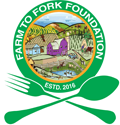Resource use efficiencies of rice grown under different crop establishment methods and fertilizer management approaches in Kaski, Nepal
DOI:
https://doi.org/10.5455/faa.137963Keywords:
Direct seeded rice, transplanted, nutrient uptake, energy use, profitabilityAbstract
The conventional transplanting of rice production system and farmers ignorance about proper fertilizer application has been a major problem in rice production and resource conservation in Nepal. To address the problem of resource conservation, an experiment was conducted in Kaski, Nepal during the rainy season of 2019. The experimental set up was in strip plot design consisting of three crop establishment methods- (i) zero-till dry direct-seeded rice (ZT-DSR), (ii) reduced-till dry direct-seeded rice (RT-DSR) and (iii) transplanted rice (TPR) and four site-specific nutrient management (SSNM) options- (i) nutrient expert (NE Model), (ii) leaf color chart (LCC), (iii) chlorophyll content meter-200 (CCM-200) and (iv) farmers fertilizer practice (FFP) with three replications in the fields. Among the establishment methods, TPR performed better in terms of grain yield and nutrient uses, whereas ZT-DSR was superior in terms of profitability and energy use. Among the nutrient management, CCM-200 showed promising performance with significantly higher grain nitrogen uptake (60.5 kg ha−1), straw nitrogen uptake (24.11 kg ha−1) and total nitrogen uptake (84.6 kg ha−1) than other nutrient management practices. The energy input in ZT-DSR and RT-DSR were 41.8% and 32.9% lower than the TPR. The energy use efficiency (EUE) was higher in ZT-DSR (15.79) and FFP (15.07) as compared to other crop establishment methods and fertilizer management approaches. The ZT-DSR with FFP had the highest EUE (20.94) followed by ZT-DSR with LCC (15.0). Whereas, the highest grain yield and B:C ratio was recorded on TPR with CCM-200 and ZT-DSR with CCM-200 respectively. Thus, considering the great importance of yield and profitability at the farmers’ level, combination of ZT-DSR and CCM-200 may be recommended to farmers.
Downloads
Downloads
Published
How to Cite
Issue
Section
License
Copyright (c) 2021 by the author(s)

This work is licensed under a Creative Commons Attribution-NonCommercial 4.0 International License.




















